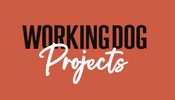David Chan ‘nine dot one’ full interview
Your use of geometry and symmetry in ‘nine dot one’ aims to reconnect the viewer to the natural world in a “comforting and beautiful” way, why do you think this is important and how does your photobook achieve this?
I’ve spent the past week camping on the east coast of Australia which was devastated by bushfires a year ago. Whilst the communities may still be rebuilding, the bush land is well on the way to recovering.
I guess the fires have been part of nature’s life cycle, sometimes needing fire to renew and regrow. There are many lessons from nature that we can heed - nature is resilient.
The inkblot-like images may help you see a familiar shape or pattern, kind of like what we used to see in clouds as a kid - hopefully allowing an opportunity to seek and explore the patterns of nature.
Your broader intention with 'nine dot one' is to bring awareness that “the planet is not a resource and we are of the planet”. Can you elaborate on this?
I would hope that the child like curiosity may lead to asking why it looks that way? Then perhaps the broader questions in life and a meditation on the bigger picture that we are part of the planet biome.
Did you know that we’re travelling in a self contained spaceship, circling a star, hurtling through the universe?
My research also led me to the Great Law of the Iroquois – which encompasses thinking seven generations ahead in decisions they make today. Perhaps I should have used seven in the book title!
Why did you sign up to the Contact Sheet Mentorship Program and, as an artists, where was your frame of mind prior to this?
I'd crossed paths with Paul McDonald several years ago when he first opened Contact Sheet, I wasn’t ready artistically as I was too focused on the technical bits.
In the last few years I had created a large body of research into the esoteric and was struggling to express it artistically and somewhat limited in my artistic vocabulary. I was looking to take the next step so I signed up.
What did you learn about yourself during the 12-month program and what are some of the biggest highlights you took from the course?
I learned that my research practice in the esoteric, journaling and curiosity of art research was my artistic practice. Some of the highlights were the exercises to push the artistic boundaries with the different mentors, the broader art exposure and more importantly for me were the feedback sessions on the misalignment of the work I was creating compared to my artistic statements.
Were there any challenges during your project and were you able to overcome these? How?
Funnily enough I learned that I had too many ideas and kept evolving them so I would never actually start a body of work. I tend to like variety and can get bored quite quickly.
So I focused on honing the one "concept" for this project but I've now got a large growing shelf of ideas. The other part of me likes structure and order - I had to let that take lead after the creative process.
How have you developed as an artist – from where you were at prior to signing up, to where your confidence is at now you’ve completed your project?
I've come a long way since the start of this journey - it's confirmed my artistic practice and what I create, opened my eyes to the business of art and delivering the work - in this case a portfolio and artistic practice Moleskine book.
What direction would you like to take your art in the future and what advice would you give someone thinking about participating in the Contact Sheet 12-Month Mentorship Program?
I would like to take initial steps into the art world - building a trusted presence and a viable art practice, I guess that would be an emerging artist? Advice?... If you want to figure out who you are as an artist, do a program with Contact Sheet - I wish you well on your journey!
